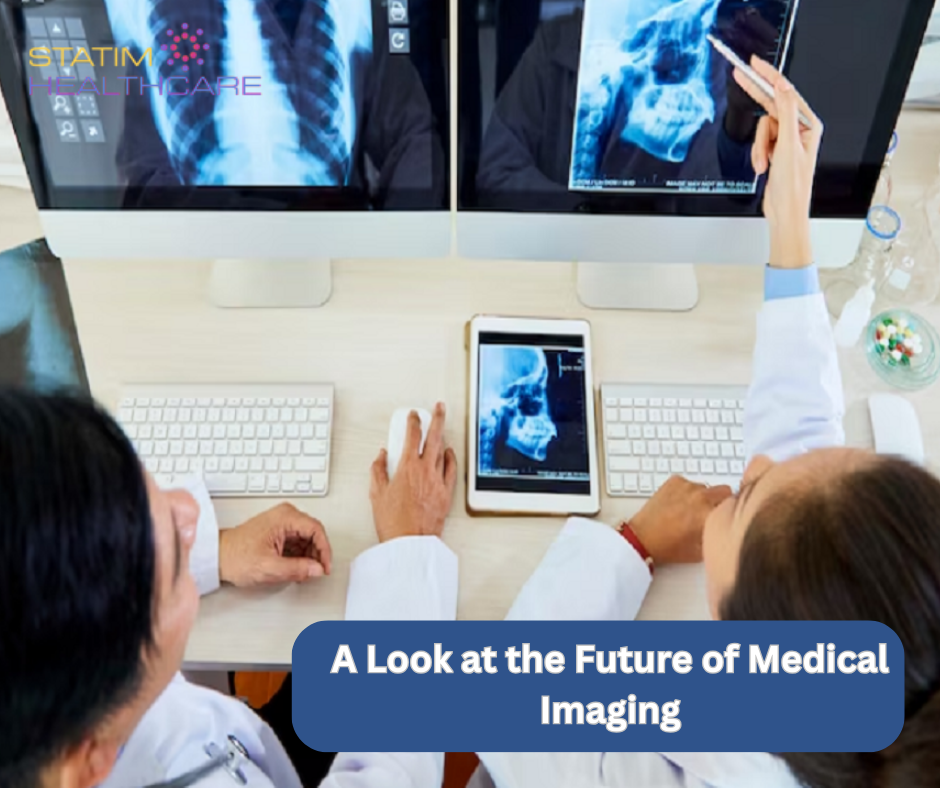Radiology practitioners can now perform more than only X-ray examinations. They can view into the human body utilizing technologies such as magnetic resonance imaging, positron emission tomography, and computed tomography. The technology that allows for precise and consistent healthcare medical imaging has progressed throughout time, making it easier for radiology doctors to determine the correct diagnosis. Non-invasive, early detection treatments for a number of maladies, including cancer, stroke, and cardiovascular system abnormalities such as artery blockages, have received funding for research.
As a result, healthcare medical imaging technology’s future appears bright. Medical imaging trends are projected to alter and improve throughout the 2020s, ensuring that radiologists can continue to make accurate and efficient diagnoses that allow medical care providers and patients to choose the most effective treatment options.
Usage of Artificial Intelligence (AI) in Radiology and Medical Imaging
By implementing AI into a radiology workflow, radiologists may do medical image analysis much more efficiently, saving time and money in the short and long term while still providing patients with the best medical imaging services.
AI benefits radiologist practices in a variety of ways:
Simplifying and Decreasing Manual Task
Machine learning algorithms can do regular manual tasks more faster and more efficiently than radiologists.
IDENTIFYING ANOMALIES ON A LARGE SCALE
Deep-learning systems can be trained to detect anomalies in massive amounts of medical imagery. For example, AI can spot defective chest X-rays up to four times faster than an expert radiologist alone.
IDENTIFYING SUBTLE CHANGES OVER TIME
Precise AI algorithms can also detect minute changes over time, enabling longitudinal examination of lesions and the compilation of standardized reports. This can be beneficial to radiologists, especially when evaluating large amounts of US medical imaging data. According to research, AI increases radiologist efficiency by up to 12%, improving diagnostic efficiency and overall patient outcomes.
Automated Radiology Workflow in Healthcare
Automated workflows can help radiologists increase job productivity and speed up healthcare delivery. By automating laborious, repetitive procedures, radiologists can evaluate larger volumes of images per study much faster.
Any automation solutions you utilize in your radiology practices, however, must be able to:
- Simple to include into your current routine
- Comply with regulatory regulations
- Perform in a way that is therapeutically meaningful and valuable to your practises
Web-Based Radiology Systems
Cloud-based PACS systems are gaining traction in radiology practices that want to improve the efficiency and scalability of their clinical practice. Cloud PACS solutions are far faster to develop, operate, and administer than on-premises PACS systems.
Benefits of Cloud-based radiology include:
- Cost savings on hardware maintenance and technical support.
- Scalability and greatly decreased downtime for upgrades or maintenance are two advantages of employing a cloud-native solution, which aids in security and functionality maintenance.
- It improves workflow efficiencies and reduces radiologists’ frustration by providing radiologists with a single platform to communicate with several hospitals rather than having to constantly log in and out of different systems.
- Allows radiologists to provide high-quality care while collaborating from any location.
AI algorithms are now being used in real time to analyze millions of medical pictures, allowing for the early detection of diseases and ailments. It is being used to improve the accuracy of mammograms, a vital tool for diagnosing breast cancer, as well as sophisticated MRI scans to aid in the diagnosis and treatment of prostate cancer. These algorithms analyze images faster and more accurately than human radiologists, reducing the need for manual image interpretation and the possibility of misdiagnosis.
Advanced MRI techniques are always being refined, making the procedure faster, safer, and more efficient. New approaches, such as “compressed sensing” MRI, allow for faster scans with fewer scans required to get the same level of resolution. This is especially helpful for patients who have problems moving or for children who have difficulty staying still during scans. For example, WB MRI is the most sensitive imaging diagnostic, allowing for earlier detection and treatment of multiple myeloma, resulting in improved long-term health and economic benefits.
Furthermore, CT scans, which are widely used to generate detailed images of internal organs and tissues, can result in significant radiation exposure. Among the new and improved technologies are dual-energy CT scans, which reduce radiation doses while producing high-quality images. These scans provide images using two distinct types of radiation, allowing radiologists to differentiate between healthy and ill tissues more accurately.
Teleradiology has emerged as a focal point of digital transformation in healthcare systems that are continually challenged to meet the demand for health care imaging services, particularly in rural and remote areas. Teleradiology bridges the gap between patients and radiologists by enhancing access to health care imaging services and reducing wait times, resulting in significantly faster diagnosis and a decreased burden on practitioners.
Thanks to 3D printing, models of internal organs and bones can be used to help plan surgical treatments and visualize complex anatomy. large storage is required due to the large amounts of data generated, assessed, and stored by the aforementioned major breakthrough technologies, but with the added caveat of providing fast access when needed. Healthcare practitioners can save and retrieve images from any location at any time using cloud-based management systems. These systems provide a secure and efficient way of storing, managing, and distributing images, reducing the risk of data loss or compromise.
Conclusion
The field of medical imaging technology is poised for a future filled with groundbreaking advancements. Key trends are shaping this trajectory, promising to revolutionize the field in the coming decade. These trends will empower radiologists to provide precise and efficient diagnoses, enabling medical practitioners and patients alike to choose the most effective treatment options available.

